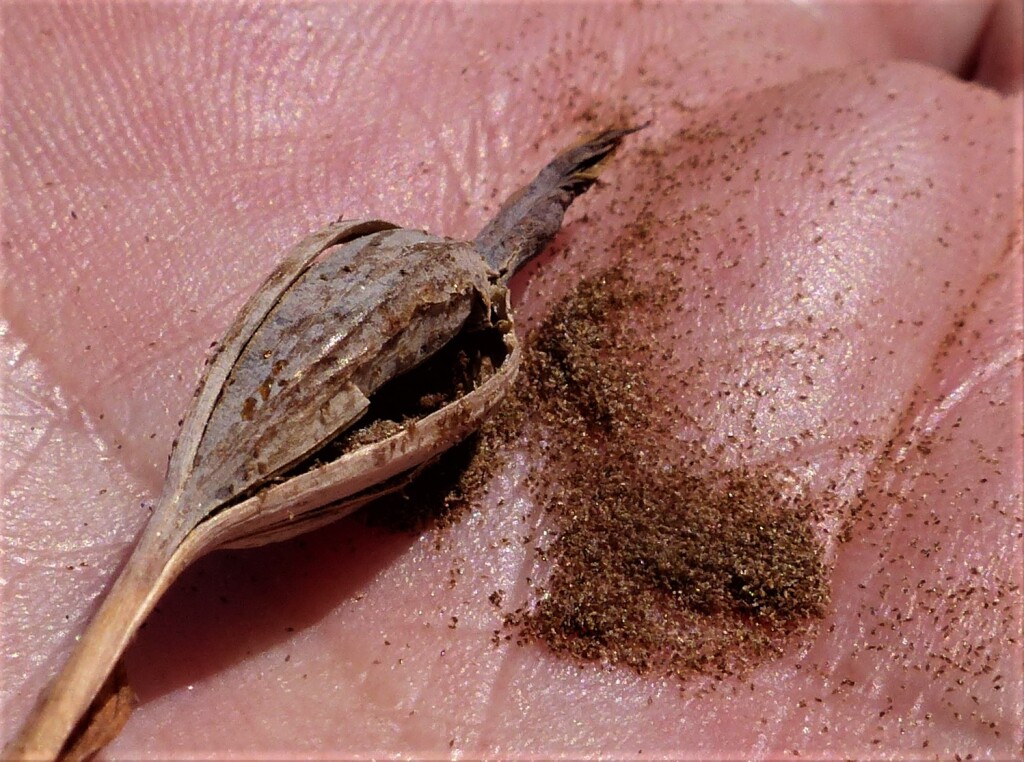Thelymitra megcalyptra
Fitzg.Flowering stem erect, straight, 20–60 cm tall, 1.5–5 mm diam., green to purplish. Leaf linear-lanceolate to lanceolate, attenuate, 10–30 cm long, 5–15 mm wide, fleshy, canaliculate, ribbed abaxially, sheathing at base, dark green grading to purplish towards the base. Inflorescence 2–15-flowered, loose. Sterile bracts usually 2. Perianth segments lanceolate to ovate, (9–)15–22 mm long, blue to purplish, occasionally lilac, pink or white. Column slender, (5–)6–8 mm long, pink or pale blue; mid-lobe hooding the anther, tubular, highly inflated, gently curved through c. 90 deg., pale to dark brown, apex bilobed, yellow; lateral lobes converging 1.5–2.2 mm long, digitiform, porrect at base then curved upwards, each with a toothbrush-like arrangement of white hairs, terminating in front of mid-lobe. Anther inserted about mid-way along column, shortly beaked. Flowers Aug.–Nov.
LoM, MuM, Wim, GleP, VVP, VRiv, MuF, Gold, CVU, GGr, DunT, NIS, HSF, HNF. Also SA, NSW, ACT. Grows mostly in drier inland habitats such as open forest, woodland and mallee scrublands on well-drained sand and clay loams.
Flowers open readily on warm days.
Thelymitra megcalyptra could be confused with T. alpina, but the former favours lower altitudes, the column is not dorsally compressed and the distal margin lacks two forward-pointing horn-like teeth. Thelymitra alcockiae generally has smaller flowers than T. megcalyptra and its leaf and stems are often glaucous.
 Spinning
Spinning


